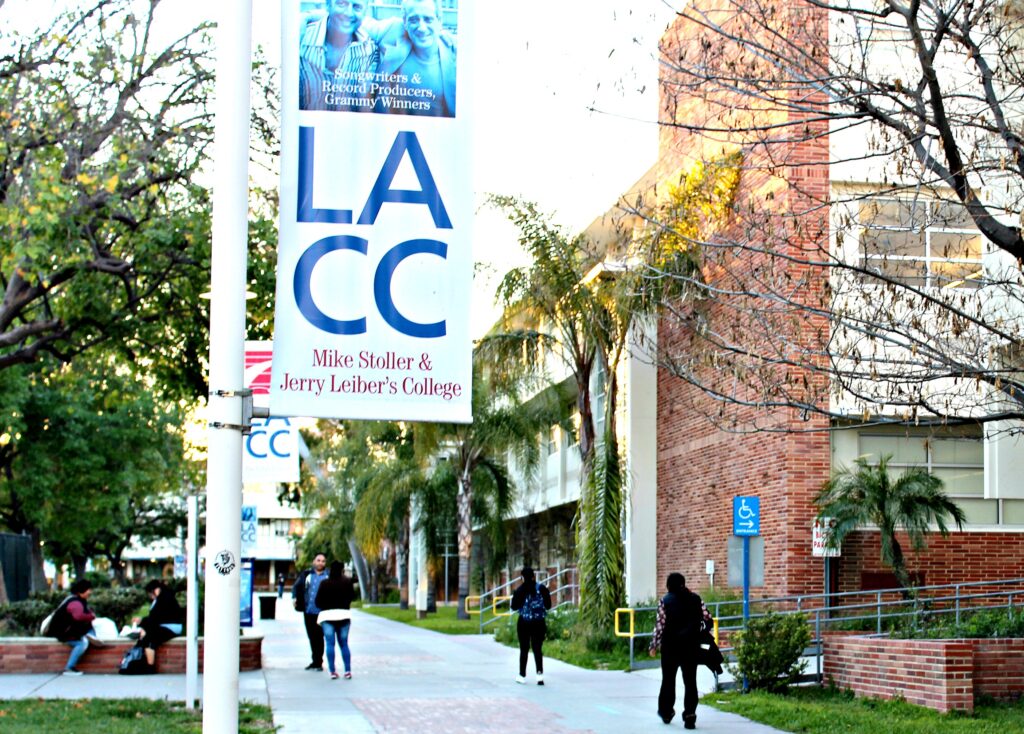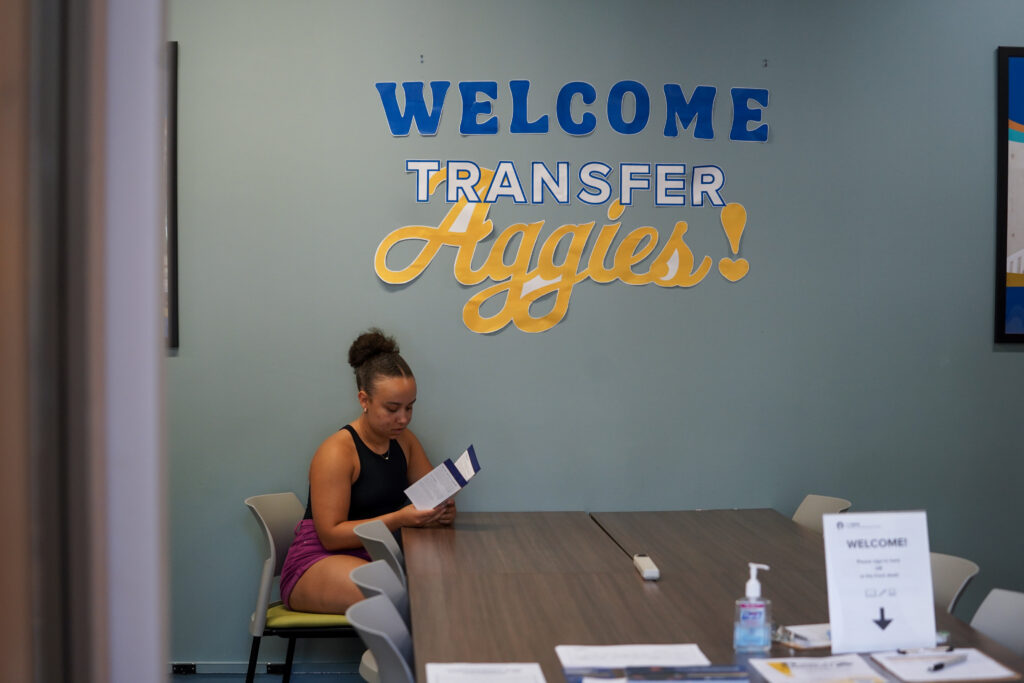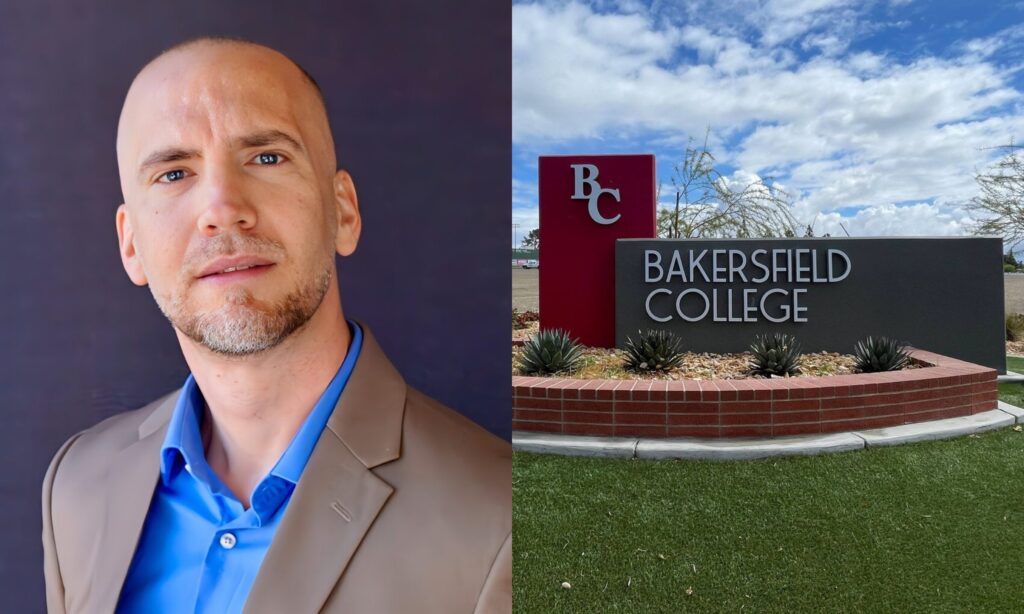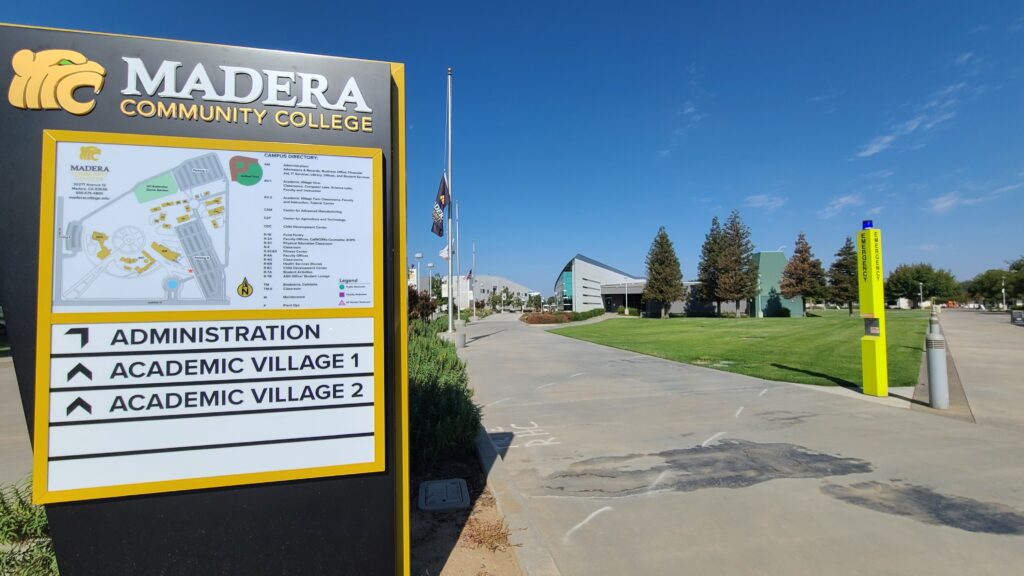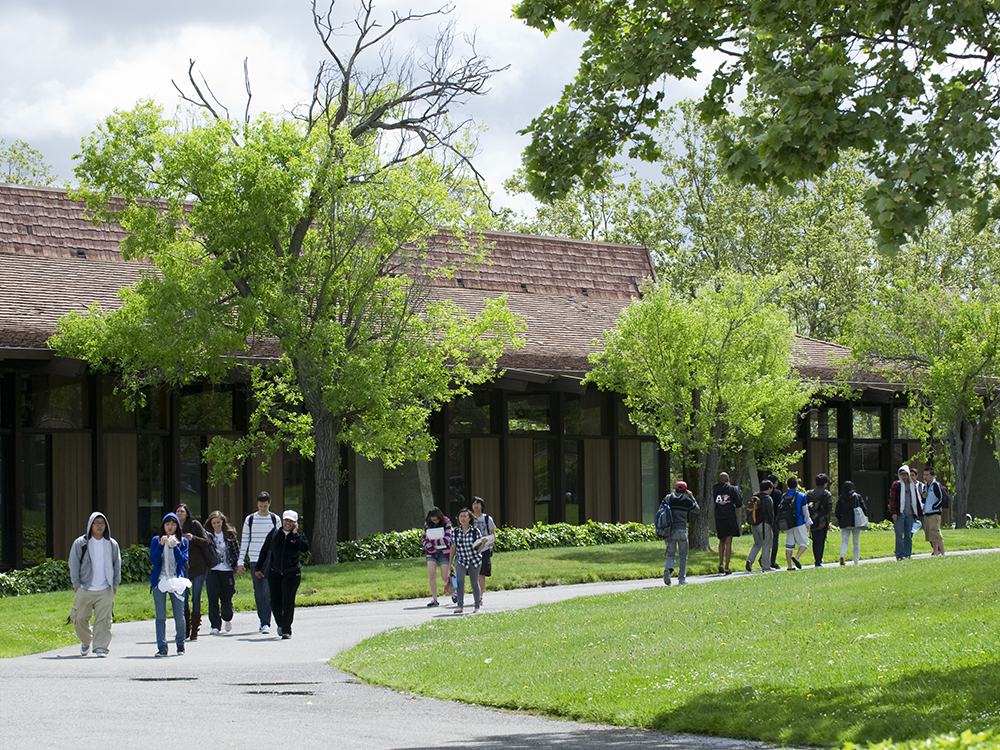
Matthew Garrett, a former professor at Bakersfield College, recently settled a lawsuit with his former employer.
Credit: Bakersfield College / Facebook
Este artículo está disponible en Español. Léelo en español.
A long-running saga involving a Kern County community college professor — hailed as a defender of free speech by some but by others as a source of campus strife — has ended with a $2.4 million payment from the community college district and the professor’s resignation.
Matthew Garrett, who was a tenured professor of history at Bakersfield College, resigned from his position and agreed to drop all claims against the Kern Community College District, according to settlement terms reached in July.
That includes the lawsuit, filed in the U.S. District Court for the Eastern District of California, claiming that the community college district violated Garrett’s First Amendment rights. Garrett also agreed to drop an administrative challenge to the district’s board, which had voted in favor of firing Garrett on April 13, 2023.
The federal suit alleging free speech violations will continue with Erin Miller, also a history professor at Bakersfield College, as lead plaintiff. The next hearing is set for Nov. 7 at the Robert E. Coyle U.S. Courthouse in Fresno in front of presiding Judge Kirk E. Sheriff. Miller declined to comment on the case, deferring to her attorney.
In turn, the district has dropped the claims it made against Garrett. In a letter recommending Garrett’s termination on April 14, 2023, Zav Dadabhoy, then-interim president of Bakersfield College, stated that the board should consider Garrett’s “immoral conduct, unprofessional conduct, dishonesty, evident unfitness for service.”
The district will distribute $2.2 million for “alleged general and emotional distress damages” through an annuity and another $154,520 for back pay and medical benefits. The settlement outlines that neither the district nor Garrett are admitting to any wrongdoing or liability.
Garrett, 46, was a vocal critic of diversity, equity and inclusion (DEI) policies that were being rolled out in the Kern Community College District. He claimed the district was supporting “highly partisan propaganda.” He wrote a piece in 2023 on a site called Minding the Campus that criticized the administration for turning Bakersfield College into what he called “a place of implicit bias and microaggression training; racial quotas and affirmative action preferences; racially segregated programming emphasizing ethno-nationalist rhetoric.”
Garrett said that he ultimately decided to settle because the case was draining him financially. He was also concerned that the college district would continue to appeal and prolong the case, even if he initially won.
Despite the settlement, both sides — Garrett and spokespersons for the community college district — still do not agree on the details of the dispute.
According to the district, the dispute stemmed from Garrett’s “unprofessional” conduct toward other faculty and students, according to a statement issued by the district shortly after the settlement.
“The dispute with Matthew Garrett was a disciplinary matter due to his disruptive actions on campus, none of which concerned freedom of speech,” read the district statement.
Garrett counters that the problems started because the district violated his First Amendment rights and retaliated against him for criticizing an administration that he claims inappropriately promoted a “one-sided partisan political agenda” focused on “social justice.” He disputes the list of charges that the district made in its recommendation to terminate him, which include “baseless attacks” on the district and his colleagues.
“I’m tired of this lie,” Garrett told EdSource. “All I asked is, ‘Why is money going here?’”
Disputing Garrett’s claim about the violation of his free speech rights, the district said in its statement to the media after the settlement, “Kern Community College District unequivocally supports the right for our students and faculty to share their views and opinions on campus and elsewhere.”
Free speech in academia
Garrett’s case attracted the attention of free speech advocates nationwide, especially those who believe college campuses are suppressing conservative viewpoints.
Garrett’s attorney Arthur Willner said he took on the case because he believes free speech is under assault on college campuses nationally. He is a partner with Leader Berkon Colao & Silverstein, a part of the Foundation for Individual Rights and Expression (FIRE) network, a free speech advocacy group.
“When you start restricting faculty and students, it not only punishes the speaker, but it also cheats the students in the classroom, who might hear a nice robust debate that interests them,” Wilner said.
Courts tend to interpret free speech broadly for professors, because they are expected to “speak out and take controversial positions,” stated David Loy, legal director of the First Amendment Coalition, a nonprofit and nonpartisan organization that promotes freedom of expression. He declined to take a position on Garrett’s case, but noted that colleges and universities are a “unique kind of workplace,” compared with other positions in government, such as in a planning or park department.
“The concept of what is ‘duly disruptive’ is different than it is in other settings,” he said, adding that being offended or not liking what a professor has to say is generally not enough to justify cracking down on speech.
Even untruths can be considered protected speech, Loy said, because the government is not a referee in the debate over what is or is not true. He said it would require “extreme circumstances” for an academic to lose their position by making outrageously false and defamatory statements, such as falsely claiming that a department chair is kidnapping children and stealing from the budget.
The controversy
The controversy began with a debate in the op-ed pages of The Bakersfield Californian that led to a public presentation Garrett made at Bakersfield College. The debate spilled over onto a local radio show hosted by conservative Terry Maxwell.
Miller introduced Garrett in 2019 when he gave the presentation called “A Tale of Two Protests” that contrasted how the Bakersfield College administration responded to two incidents on campus. The first involved chalkings that referred to Christopher Columbus as a “murderer” and “genocidal maniac.” In the other, stickers with phrases such as “never apologize for being white” and “smash cultural Marxism” were placed on bulletin boards, primarily those of Chicano studies-related events. The stickers were created by the Hundred Handers and promoted on a Telegram social media channel by a leader who was jailed earlier this year in the United Kingdom for “inciting racial hatred” with stickering campaigns, according to the BBC.
Garrett defended the free speech of both incidents, but decried the administration for making a campuswide announcement that characterized the latter as “hate speech.” Garrett argued that the stickers may be a protest against diversity, equity and inclusion initiatives on campus.
“I am neither endorsing the sticker campaign’s methods nor its messages, but I am asking that we take them seriously,” he wrote in his op-ed in The Bakersfield Californian. “Does our community’s college devote disproportionate attention and resources to certain groups at the expense of others? Does that marginalize some students? To what extent is that appropriate?”
Garrett, a white man, is a vocal critic of diversity, equity and inclusion initiatives, particularly those aimed at specific racial groups on campus. For instance, he calls Umoja — a program that offers courses and club activities aimed at improving the success of African American students throughout California community colleges — a “racially segregated class” that he told EdSource should produce data to show that it is not a “crutch” that actually undermines students’ self-sufficiency.
Professors Andrew Bond and Oliver Rosales, Garrett’s colleagues at Bakersfield College, took issue with some of the claims in Garrett’s September 2019 presentation, which they said were repeated on Terry Maxwell’s radio show. The professors filed a complaint against Garrett with the college’s human resources department, claiming that he acted unprofessionally by accusing them of financial impropriety. The district said it hired an independent investigator who corroborated those charges against Garrett.
Garrett said the district mischaracterized him. He said he was not accusing the college or any professor of anything illegal; he was just criticizing the college’s affiliations with what he called “partisan” groups. Garrett characterized a noncredit course covering the history of Cesar Chavez and the United Farmworker Movement in Kern County, which was created by Rosales, as “partisan indoctrination.”
Paige Atkinson, then a journalism student at Bakersfield College, weighed in through a piece that ran in The Bakersfield Californian and a local site called South Kern Sol. In the piece, she praised college staff for “protecting its minority students by alerting them to the vandalism — even if it means ruffling the feathers of apologists on campus.” The piece criticized Garrett as one of those apologists. Atkinson said that the Hundred Handers was not simply a “conservative” group exercising its right to free speech, as Garrett wrote, but a “blatantly hateful” group that promoted “white supremacy and the inevitable violence it brings.”
Garrett responded, calling South Kern Sol a “propaganda site” for the United Farm Workers and activist Dolores Huerta. He said the publication was partisan and that it was inappropriate for the Kern Community College District to donate to them. He accused Atkinson, then editor-in-chief of Bakersfield College’s student paper, of writing a “hit piece” on him in coordination with the district.
“I said, ‘Why is the college paying for this smear piece?’” Garrett said, in an interview with EdSource.
District spokesperson Norma Rojas said Bakersfield College faculty and programs sometimes obtain grants, which may be maintained in district accounts but will not commingle with other district or college funds. Grant funds donated to South Kern Sol came from a student journalism grant from the Virginia and Alfred Harrell Foundation in partnership with California Humanities and administered through the Bakersfield College Foundation, Rojas said in a statement.
The district denied that it otherwise had a relationship with South Kern Sol “outside of their traditional outreach to a wide variety of local media to inform of news and happenings,” according to a recent statement from the district.
John Harte, a retired professor of journalism at Bakersfield College, praised his former student, Atkinson, and defended her against Garrett’s charge that she had coordinated her piece with district leadership — which would be considered a serious breach of journalism ethics.
The conflict widened beyond the topic of campus protest to include more students and many more professors. Garrett founded the Renegade Institute for Liberty (RIFL), a group of faculty members that aimed to promote “open discourse of diverse political ideas with an emphasis on American ideals and western historical values.” The group’s posts on Facebook became a lightning rod for criticism — and the subject of the recommendation to terminate Garrett by then-interim President Dadabhoy.
That recommendation said that Garrett, as faculty lead of RIFL, failed to restrict its “baseless attacks” on the district and colleagues. It took issue with one Facebook post that called the “chronic mismanagement” of a local bond measure a “consistent embarrassment” for the college and another post that said the college’s curriculum committee were giving away the equivalent of participation trophies by approving Rosales’ course that covered farmworker history.
Conflict over diversity, equity and inclusion
The implementation of diversity, equity and inclusion initiatives has divided faculty and staff at Kern Community College District, particularly its largest campus in Bakersfield, where Garrett worked, according to a workplace survey conducted last spring.
One Bakersfield College faculty member quoted anonymously in the survey called diversity, equity and inclusion initiatives “an ideological religion” and complained that the debate over DEI has “led to a social and political divide that is disrupting the ability of employees to collaborate.”
In a lengthier version of the survey, another college faculty member praised the district’s leadership for understanding the value of diversity, equity and inclusion but noted that there is “significant” opposition to DEI, especially in the faculty ranks. This faculty member pointed to Garrett and RIFL as a source of discord on campus and for promoting “agenda, politics and hate” on every college committee and that they had “successfully halted almost all inclusive and equity based work on this campus.”
The Kern Community College District pointed to Garrett’s public accusations as a cause of internal strife in the district.
“Garrett’s pursuit of notoriety devolved the sincere efforts by the District and the community to create an environment where students can thrive into an environment of hostility and anger,” the district’s statement after the lawsuit said.
Harte agreed and said that he’s happy to see Garrett go.
“I think Garrett’s settlement and his resignation in the long-run is best for the students,” Harte said. “He is really divisive.”
Garrett pointed to the workplace survey as evidence that district leadership is to blame for that dysfunction. The word “retaliation” came up in 75 out of 423 employee surveys. “Social and political agendas” came up in 131 surveys.
“It’s not just ‘crazy disgruntled Matt Garrett’,” Garrett said.
The Kern Community College District’s new chancellor, Steven Bloomberg, said in a statement to EdSource that he has begun addressing the concerns outlined in the workplace survey, such as creating a leadership development program for supervisors.
“We have heard the concerns from faculty and staff and are actively working to address them,” Bloomberg wrote. “I am committed to fostering a culture of continuous improvement.”
The settlement doesn’t mean that Garrett has stopped criticizing the Kern Community College District. Since the settlement was announced, he has spoken out, through his personal Facebook page, against the contract renewal of the vice chancellor of human resources, who he claims targeted him and is responsible for the district’s poor workplace climate. Both he and RIFL have posted about the board members who voted to dismiss him, demanding accountability.
“I didn’t want to be an activist,” Garrett said. “But I’m going to keep pointing out the problems.”
Disclosure: Emma Gallegos was an independent freelancer who wrote pieces for South Kern Sol between 2017 and 2019.

